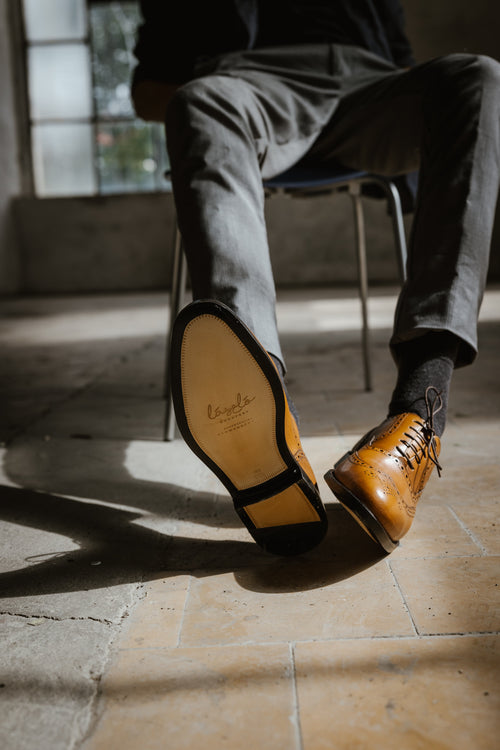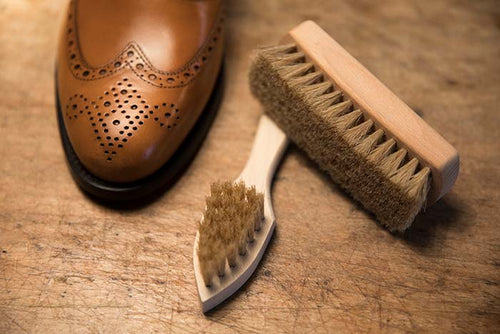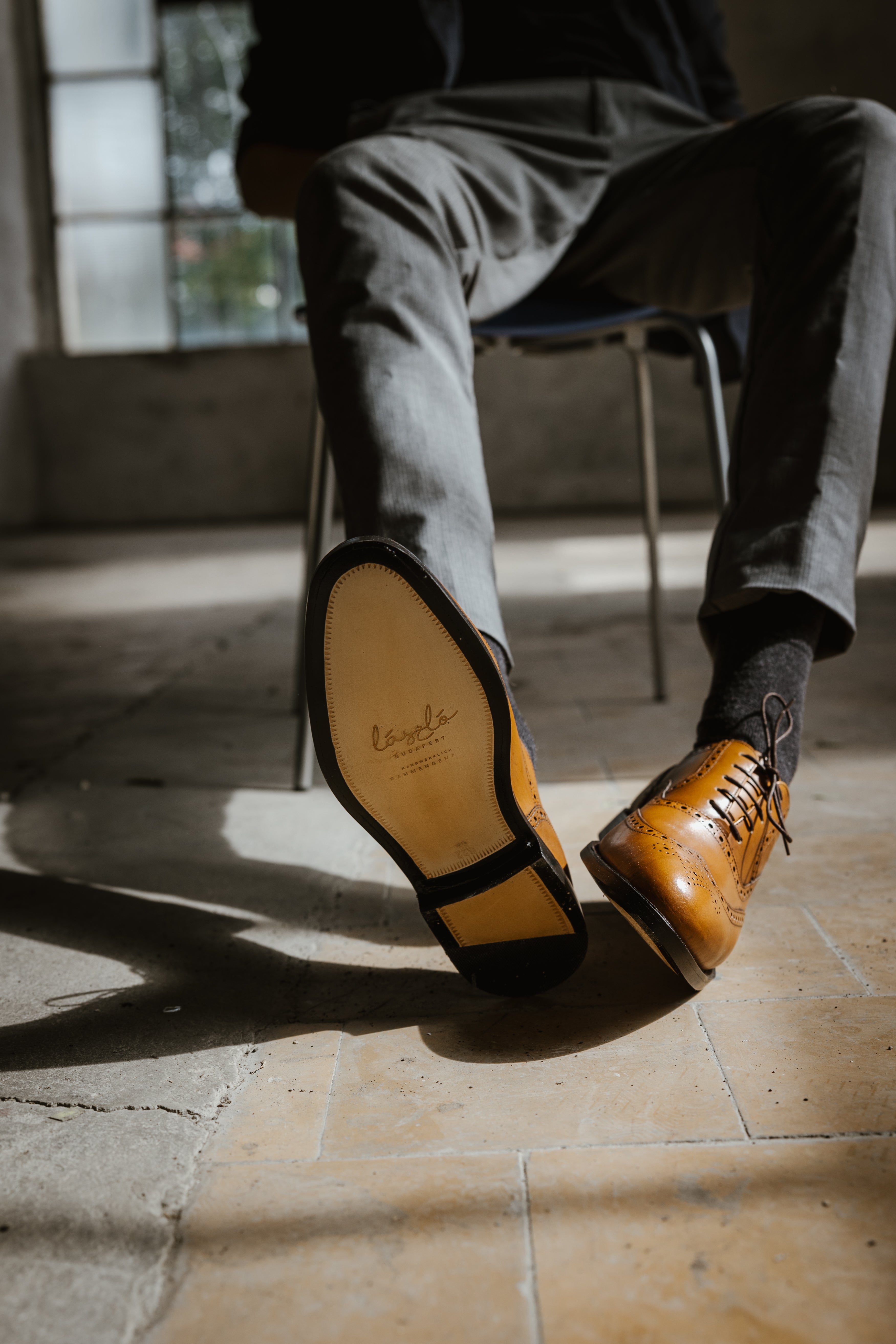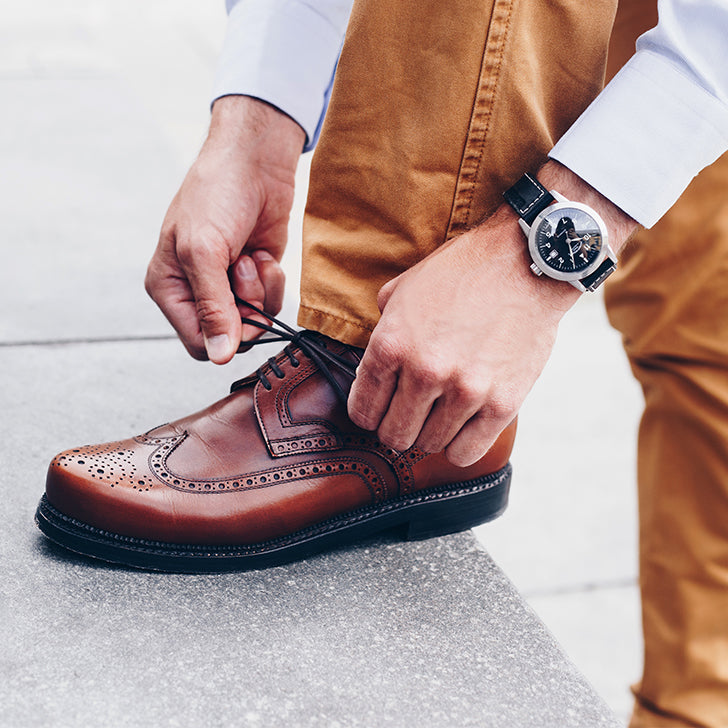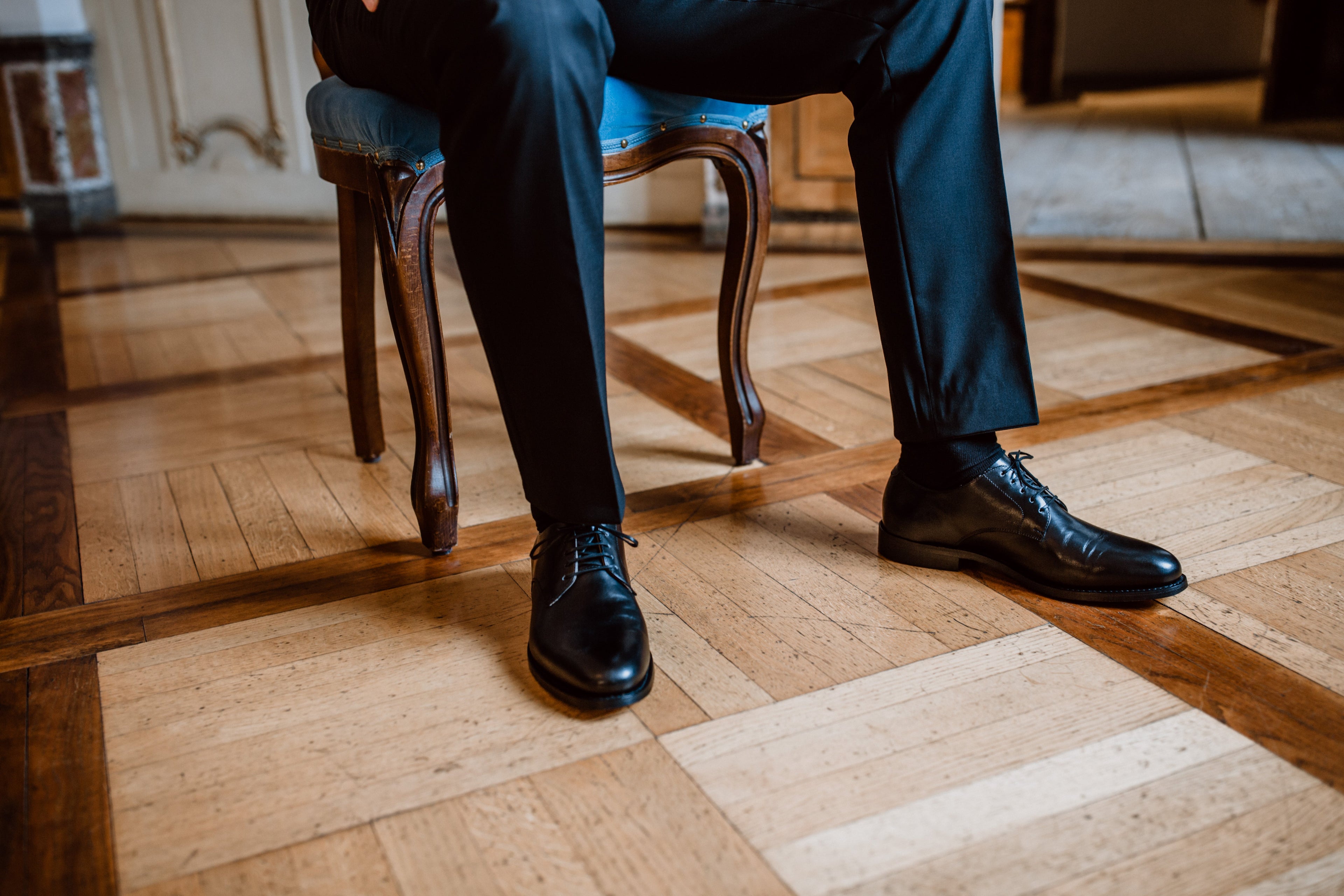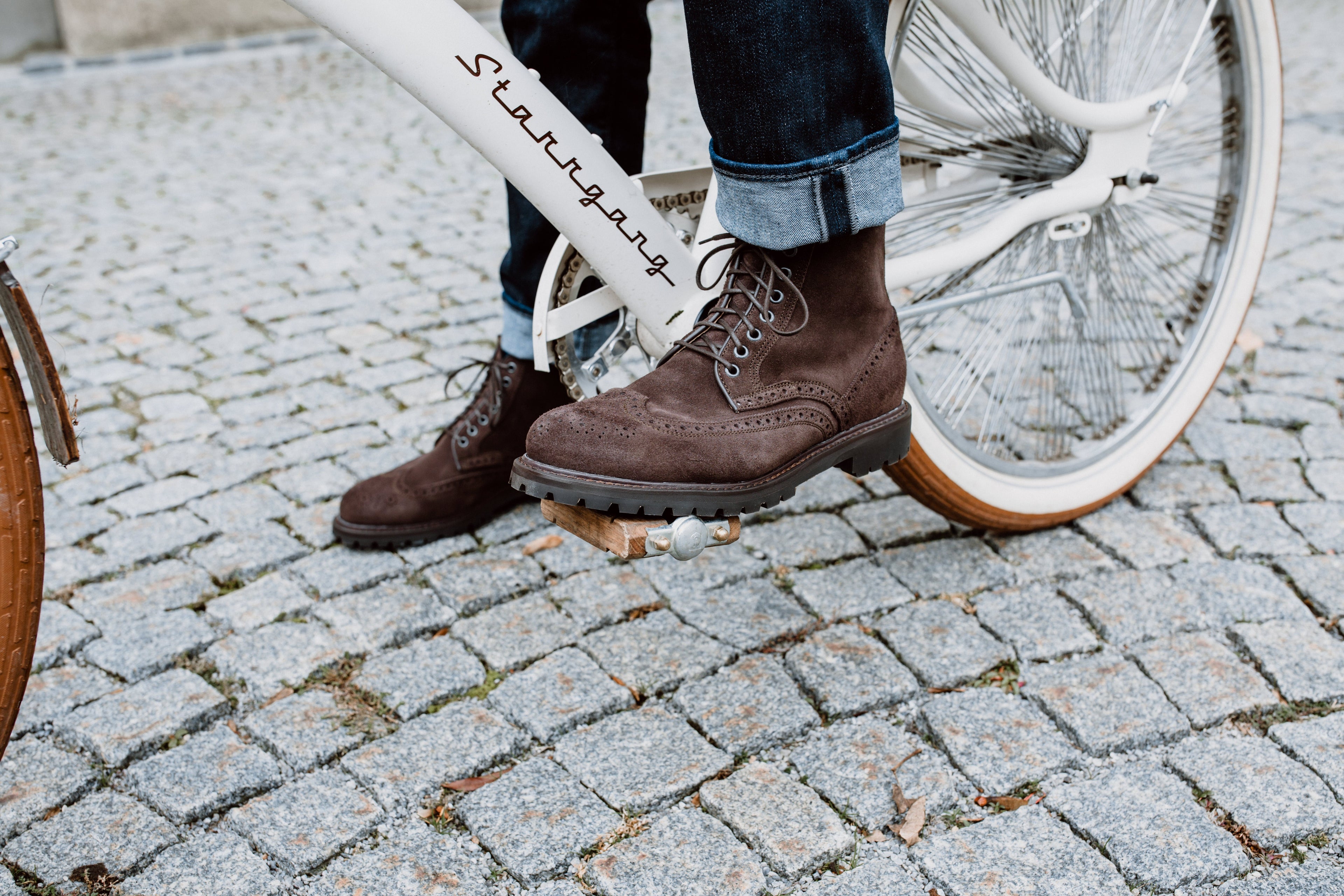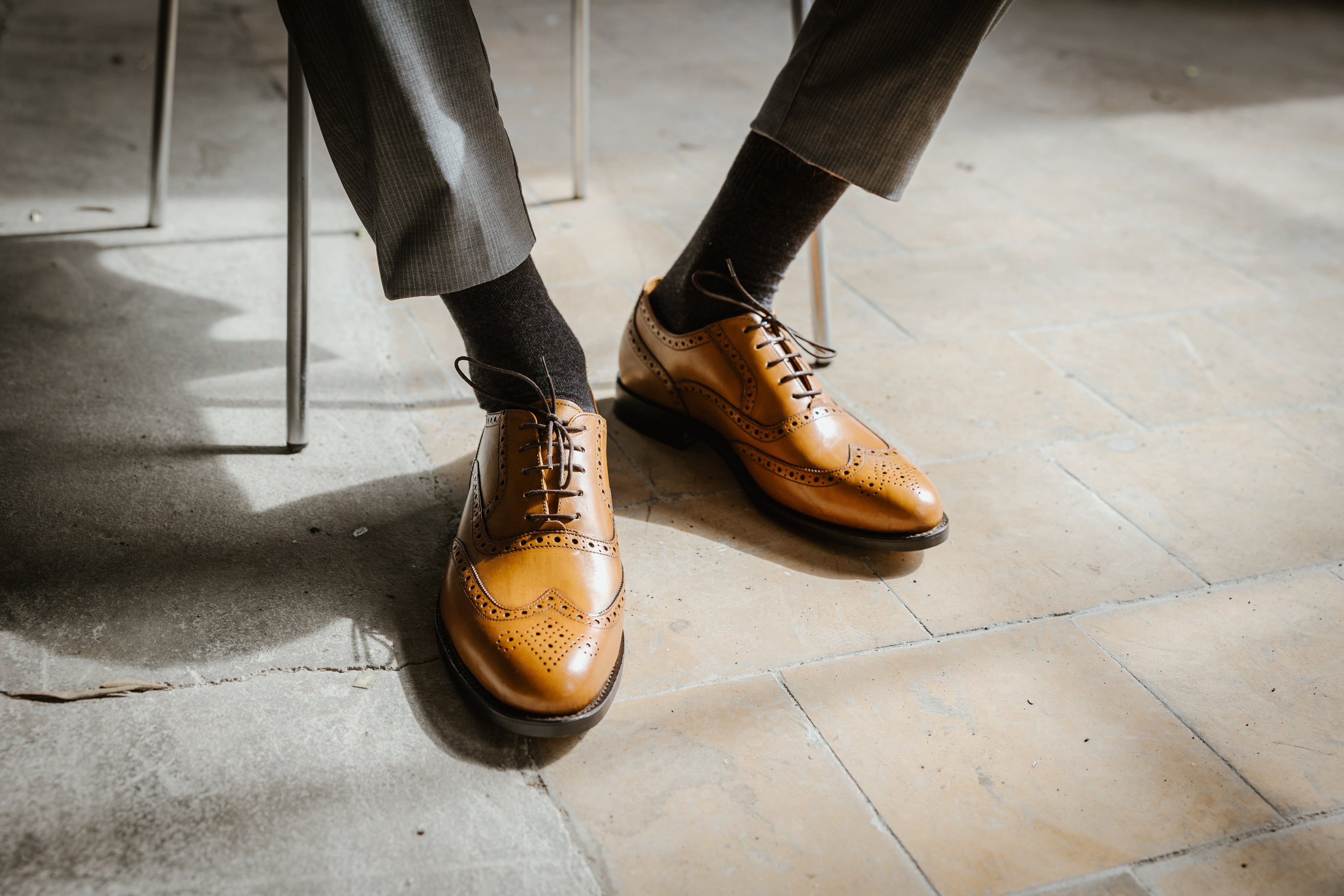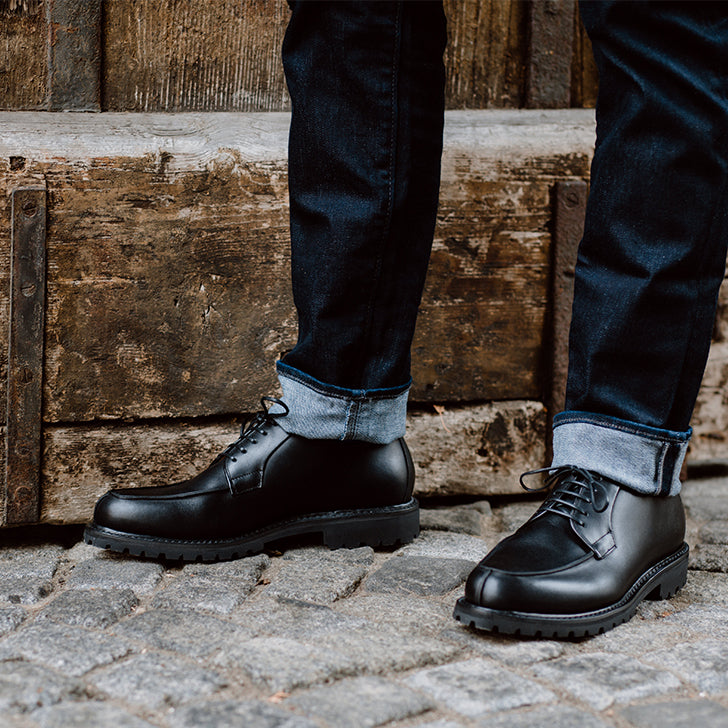Leder
Qualität kommt von Qualität
Für sehr gute Schuhe weniger gutes Leder zu verarbeiten, das der zugehörigen Goodyear-Konstruktion nicht ebenbürtig ist, ist ein moralisch-ästhetisches No-Go: respektlos gegenüber der eingesetzten Arbeit und gedankenlos gegenüber der Umwelt, wenn Schuhe, die länger leben könnten, durch „unterlassene Hilfeleistung“ vorzeitig auf die Müllhalde kommen.
lászló Budapest verarbeitet selbstverständlich nur Leder, die mit der Schönheit der rahmen- und zwiegenähten Modelle und der Qualität der Manufakturfertigung mithalten können. Auch wenn in Zeiten einer immer weniger artgerechten Tierhaltung Häute in Top-Qualität zunehmend schwer zu finden sind.
Gerben ist Transformation
Neben der Gesundheit der Rinder bestimmt die Gerbung die Eigenschaften des Leders. Dabei ist Gerben wahre Alchimie, denn es stoppt die natürliche Zersetzung und verwandelt die labilen Eiweißstrukturen der Tierhaut in dauerhaftes Lederfaser. Eine Kulturpraxis, die den Menschen schon früh umfängliche Nutzungsmöglichkeiten eröffnete - bis heute. Leder wird an Hautfreundlichkeit, Atmungsaktivität und Langlebigkeit noch immer von keinem Retorten-Werkstoff erreicht oder gar übertroffen.
Für das Oberleder und Futterleder der Schuhe verwendetlászló Budapest ausschließlich hochwertige Kalbleder. Chromgerbung ist hierbei unverzichtbar, da die feinporige dichte Struktur von Premiumledern durch pflanzliche und mineralische Gerbstoffe nicht erreicht wird. Vegetabile Schaftleder haben insgesamt eine lockerere Faserstruktur und sind damit wenig formbeständig.
Darum setzt lászló Budapest auf Gerbereien, die gekonnt traditionelle Gerbverfahren mit moderner Gerberchemie verbinden.
Das ging auf eine Kuhhaut - Gerbung historisch
Bis ins späte 19. Jahrhundert gerbte man ausschließlich mit Rinden, Früchten, Wurzeln, Mineralien (Alaun) und Fetten wie etwa ranzigem (oxidiertem) Fischtran oder Tierexkrementen.
Als sich die Alchimie zur Chemie weiterentwickelte, wurde auch aus dem Gerben eine Wissenschaft. Die Umwandlung von tierischem Eiweiß in Leder wurde systematisch erforscht und Mitte des 19. Jahrhunderts durch neue Verfahren revolutioniert. Chromsalze aus dem Labor verkürzen seither die Gerbprozesse von Wochen und Monaten auf wenige Tage und ermöglichen die Herstellung von Leder mit besonders feinporiger Oberfläche.
lászló Budapest bezieht seine Leder aus den besten deutschen und italienischen Traditions-Gerberein, die den EU-Richtlinien unterliegen und eine restlose Transparenz des kontrollierten Gerbvorgangs garantieren.
Oberleder - Futterleder - Sohlenleder
Für unser Oberleder verarbeiten wir zwei verschiedene Kalbleder-Qualitäten. Dichtes glanzgestoßenes Boxkalb passt zu den formelleren Optiken. Während die leicht mattierten offenporigen Kalbleder in verschiedenen Zurichtungen unsere Modelle mit modernerem Erscheinungsbild perfekt zur Geltung bringen.
Als Futterleder verarbeiten wir ebenfalls feinste Kalbleder. Weil bei einer traditionell „dampfen“ (feuchten) Verarbeitung des Schuhbodens unschöne Wasserränder in vegetabilem Futterleder zurückbleiben, bevorzugen wir kontrolliert chromgegerbte Kalbleder, die ohne Verfärbung auf Feuchtigkeit reagieren.
Andere Bedingungen gelten für das Sohlenleder. Unsere Sohlen schneiden wir aus Rindercroupons (Rückenteil), die chromfrei, mit hohem Anteil an pflanzlichen Gerbstoffen und angelehnt an traditionelle Verfahren gegerbt werden.
Dafür werden die Felle nach dem Durchgang durch die sog. Wasserwerkstatt (Wässern, Enthaaren) im ersten Gerbgangmit synthetischen Gerbstoffen angegerbt und anschließend mit pflanzlichen Gerbstoffen aus Rinden und Früchten in traditioneller Grubenlagerung ausgegerbt.
Leder, das für die Laufsohle bestimmt ist, wird durch mechanisches Walzen abschließend verdichtet und damit widerstandsfähiger gegen Feuchtigkeit im Bodenkontakt.
Leder für Brandsohlen und Zwischensohlen darf dagegen in seiner Struktur nicht zu fest sein. Darum verarbeiten wir dafür den weicheren Rinderspalt, der auch bei doppelsohliger Verarbeitung elastisch bleibt.
Mit den beschriebenen Ledern in Topqualität macht das Tragen von lászló BudapestModellen glücklich und wird zum ebenso ästhetischen wie bio-dynamischen Erlebnis.
